In David Moon’s absence (coleading a birding trip with Bill Gette to Nome, Alaska—yeah, tough job, but somebody has to do it!), Susan Yurkus joined me for Wednesday Morning Birding. We decided on a change of pace and visited Amesbury’s Woodsom Farm for a leisurely stroll through its grasslands. It was a beautiful morning—clear to partly cloudy skies, temps in upper 70s, and winds 5-15 mph out of the southwest. Our focus, of course, was on grassland birds.
The first birds we saw were Barn Swallows swooping low over the tall grasses. Then, it wasn’t long until we had our first of many Bobolinks to come, its distinctive song bubbling as the male showed its typical fluttery flight behavior. The male’s alternate or breeding plumage is unique among North American songbirds, with its black underparts and lighter back. As the Birds of North America Online states, “The Bobolink is polygynous and was one of the first species in which multiple paternity (females laying a clutch of eggs sired by more than one male) was documented. In addition, this North American breeder is an extraordinary migrant, traveling to south of the equator each autumn and making a round-trip of approximately 20,000 kilometers. One male known to be at least 10 years old presumably made this trip annually, a total distance equal to traveling 5 times around the earth at the equator!” Come August, the male molts from its distinctive alternate plumage into its basic or nonbreeding plumage, looking much like the female. Soon thereafter, migration begins to its wintering grounds in northern Argentina, where Bobolinks are called “ricebirds” and oftentimes shot as agricultural pests.
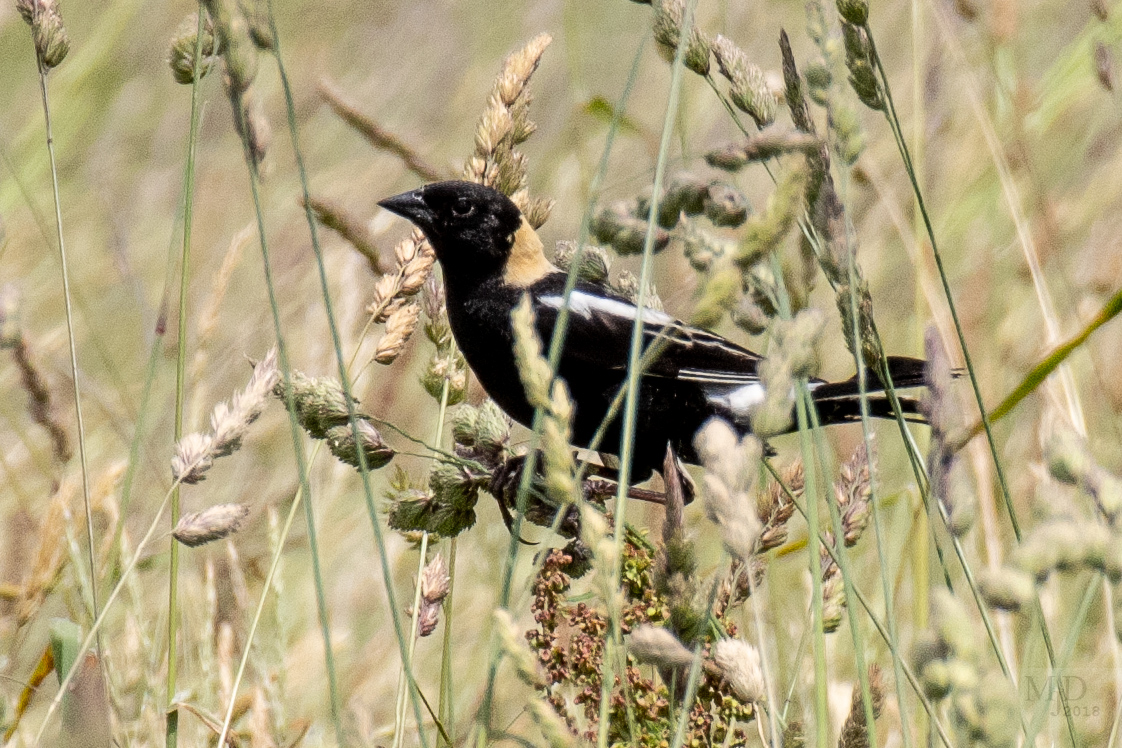
Bobolink by Mike Densmore
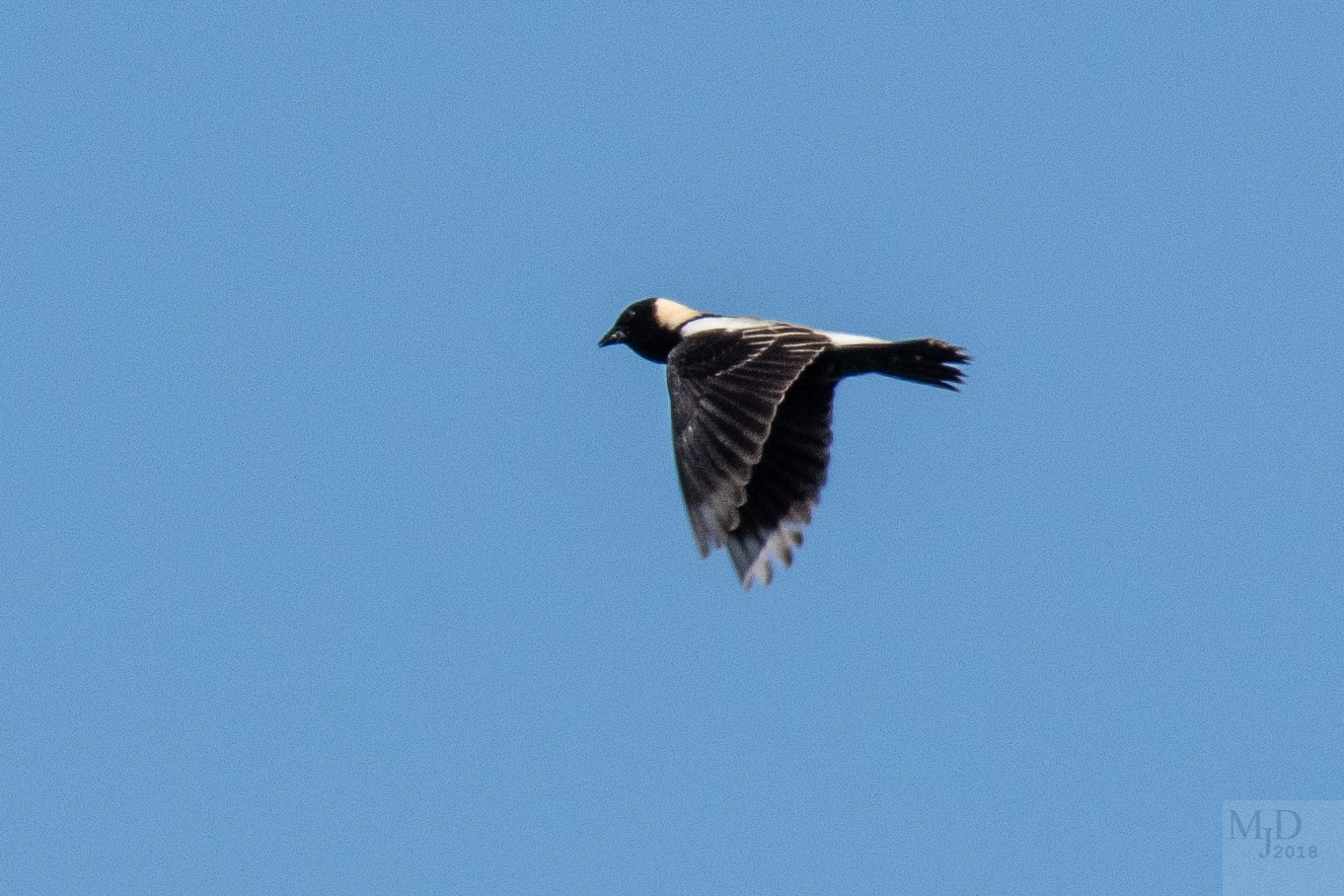
Bobolink by Mike Densmore
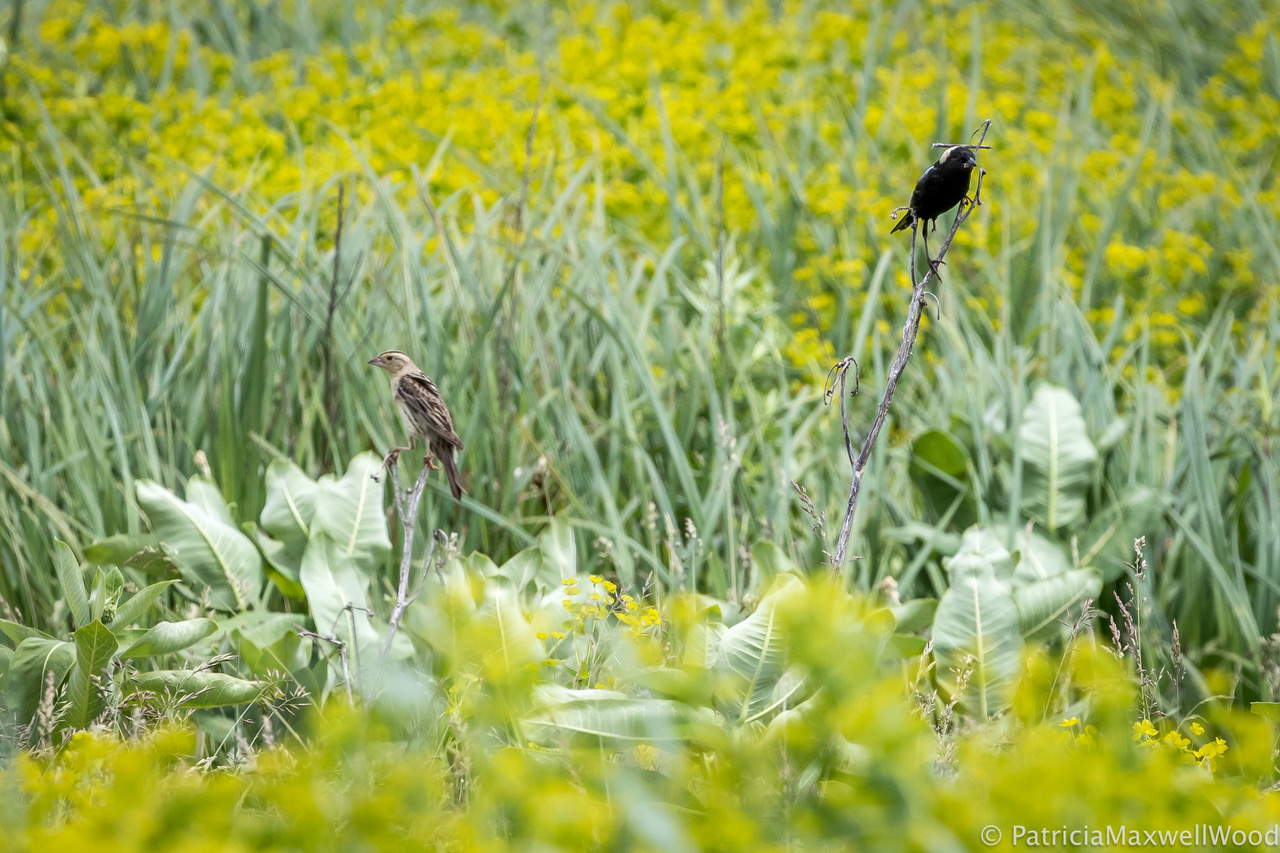
Bobolink pair by Patti Wood
Off to our right, somewhere in the adjacent woodland, we heard a Black-billed Cuckoo vocalizing its recognizable “cu-cu-cu-cu cu-cu-cu-cu.” Another target species at Woodsom was the Eastern Meadowlark. Susan’s sharp ears picked up a male’s song across the field to our left. By morning’s end, we accounted for four of this member of the blackbird family, Icteridae. A very accommodating male flew in front of us and perched in the grass affording us great views of this grassland species. Its bright yellow throat and underparts along with its distinctive black “V” on its breast were stunning! For many, this was a “life” bird—first time seen, ever. Meadowlarks, both Eastern and Western, and Bobolinks are all suffering population declines due to loss of habitat from development of various forms.

Eastern Meadowlark by Bob Minton
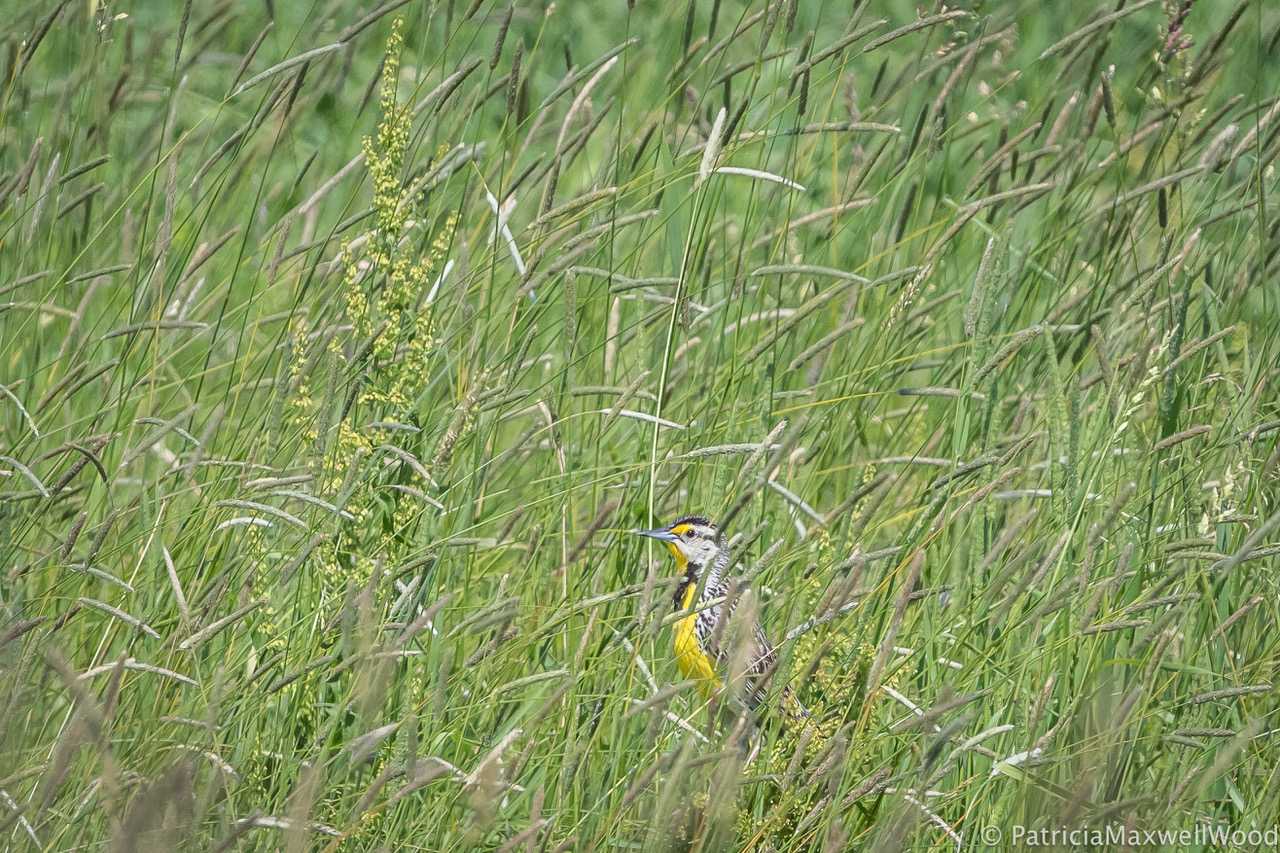
Eastern Meadowlark by Patti Wood
Again, Susan’s sharp ears picked up a “song” that many of us have difficulty hearing because of its low volume—the “fitz-bew” of a Willow Flycatcher. Of course, the wind from behind us did not help. She heard it and then saw it atop a shrub out in a marshy lowland. It was vocalizing and actively fly-catching, working its way closer to us for great looks. Recall, this is one of the Empidonax flycatchers that is impossible to identify unless the sighting comes with a vocalization. The other “Empid” flycatcher in the mix is the Alder Flycatcher—its vocalization can be characterized as, “free-beer,” on an upward inflection. Oftentimes, the habitat each species is occupying can give an ancillary assist to an ID. Eventually, we accounted for three Willows.
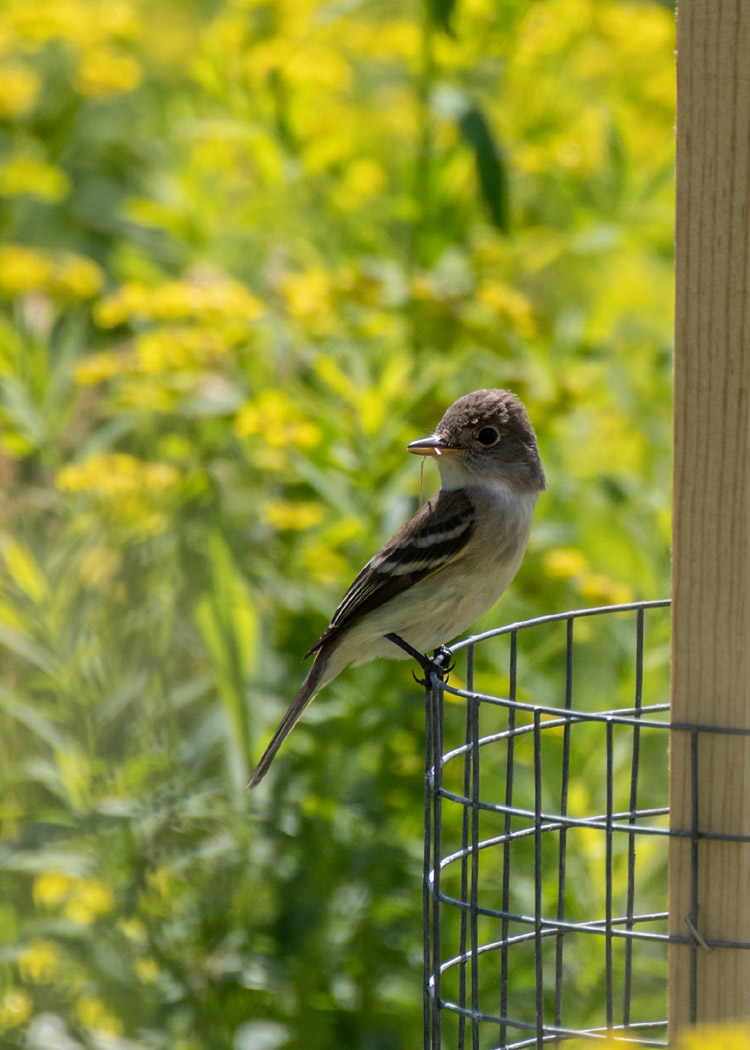
Willlow Flycatcher by Bob Minton
Just so you don’t think that the leaders know everything when it comes to knowledge about birds, since this visit to Woodsom Farm, I have learned something new about Red-winged Blackbird sexual dimorphism, and this because of a photo taken by Bob Minton. There were Red-wings everywhere on this lovely day for birding. As in the past, I thought that all the heavily streaked birds were females. At Woodsom, possibly not. Take a look at Bob’s photo below. At the bend in the wing, the lesser coverts are showing orangy-red and the throat is buffy in color. Checking a couple of go-to sources—Sibley and Birds of North America Online—I find that some 2nd-year males are also heavily streaked, like the females, and that they can show orangy-red lesser coverts, as in Bob’s photo. However, according to Birds of North America Online, “Second-year male is highly variable in plumage, from female-like brown with heavily streaked breast to black with brown flecks; epaulets are also variable, typically red-orange with brown or black spotting. Female also shows some delayed plumage maturation, but less than male. All females are mottled brown above and heavily streaked below with a prominent white eyebrow stripe. Third-year and older females are variable in throat (pink to buffy) and epaulet (dull orange to bright red-orange) color. Second-year females are less variable, throat and face light pink, epaulets brown to salmon.” So, when all is said and done, the bird in Bob’s photo could be either male or female. I’m thinking that the accompanying photo by Susan Balser is more typical of a female plumage, with older females having the rosy blush to the throat. I suppose the more definitive determination of male vs. female in the heavily streaked individuals is seeing a male chasing after a streaked individual—more than likely that bird is a female . . .
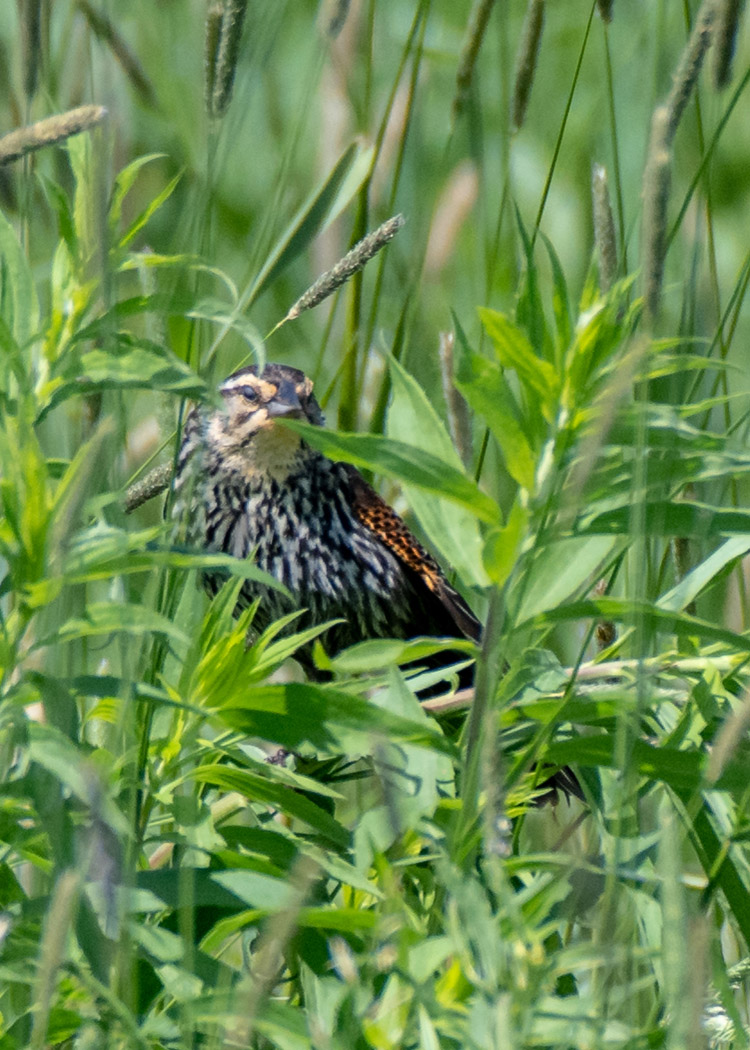
Female Red-winged Blackbird by Bob Minton

Female Red-winged Blackbird by Susan Balser
When thinking of grasslands, we think of sparrows. Before our little stroll was over, we heard and saw about five Song Sparrows and an equal number of Savannah Sparrows. One of the latter landed directly in front of us on the trail and snatched a grasshopper. Obviously, this bird was collecting food for hungry nestlings somewhere out there in the field.
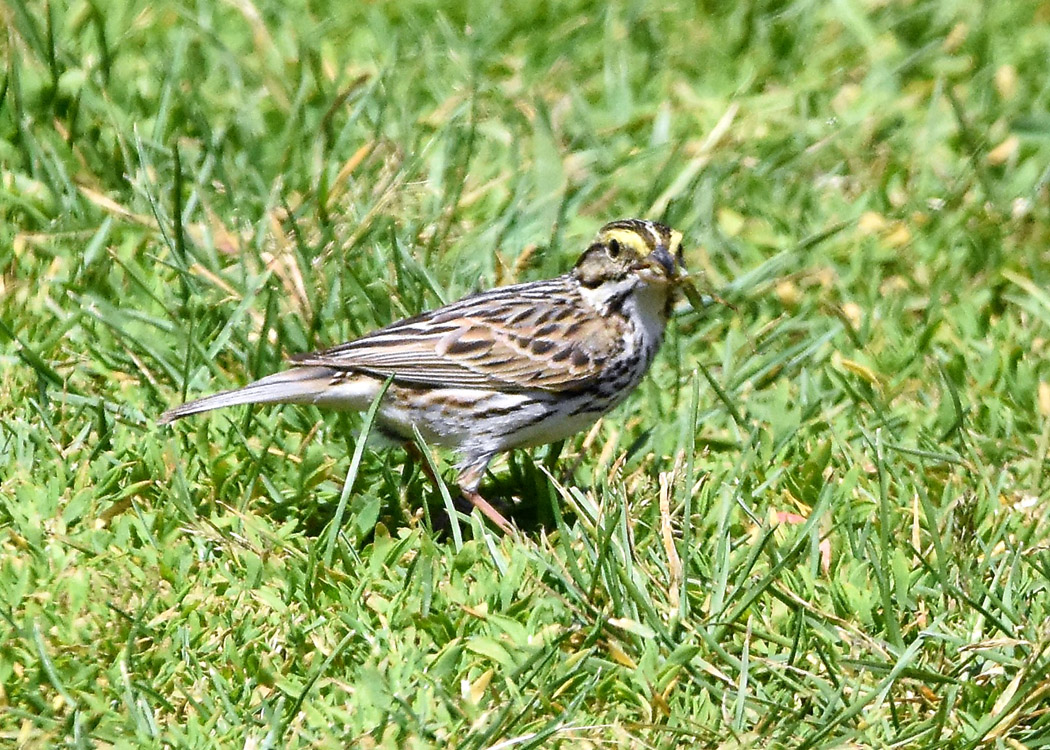
Savannah Sparrow by Susan Balser
Of course, with most songbirds feeding young, much of the birdsong has abated. But, we heard and saw a couple of Yellow Warblers, and a Common Yellowthroat was singing its signature “witchity-witchity-witchity” deep in the shrubs adjacent to a wetland.
At morning’s end, I do believe that everyone enjoyed what was a new birding venue for most — yes, a nice change of pace. Next week, please join David Larson and me for “the Daves are us show” and another edition of Wednesday Morning Birding.
All the best!
Dave Weaver
Our list:
Double Crested Cormorant (2)
Red-tailed Hawk (1)
Black-billed Cuckoo (1) – heard.
Willow Flycatcher (3)
Eastern Kingbird (1)
Blue Jay (1)
American Crow (1)
Tree Swallow (~ 6)
Barn Swallow (~ 7)
Tufted Titmouse (1) – heard.
American Robin (~7) – 1 on nest.
Gray Catbird (1)
Northern Mockingbird (3)
European Starling (1!)
Common Yellowthroat (1) – heard.
Yellow Warbler (3)
Eastern Towhee (1) – heard.
Savannah Sparrow (5)
Song Sparrow (~ 5)
Northern Cardinal (2)
Bobolink – common.
Red-winged Blackbird – common.
Eastern Meadowlark (4)
Common Grackle (~ 12)
Brown-headed Cowbird (3)
Baltimore Oriole (1)
American Goldfinch (3)

